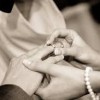Risk of developing AIDS in HIV-infected cohorts of hemophilic and homosexual men
Abstract
The latency period and/or incidence of the acquired immunodeficiency syndrome (AIDS) may differ in persons infected with the human immunodeficiency virus by different routes or having different “cofactors.” We compared 79 hemophilic men in Pennsylvania and 117 homosexual and bisexual men in California, all having known dates of infection and long postinfection observation periods, to examine these hypotheses.… Read more




